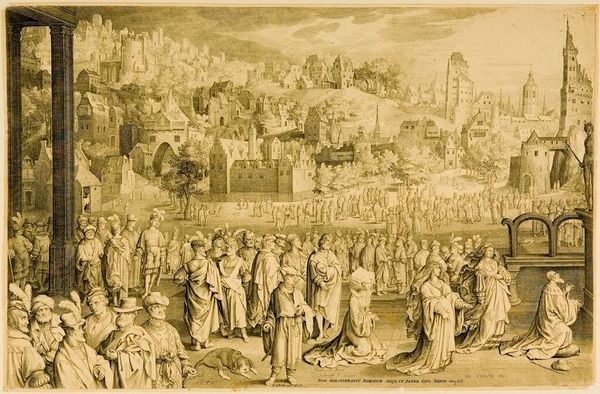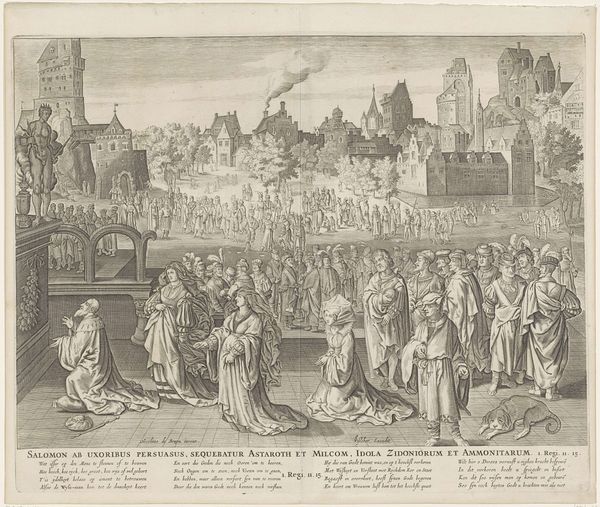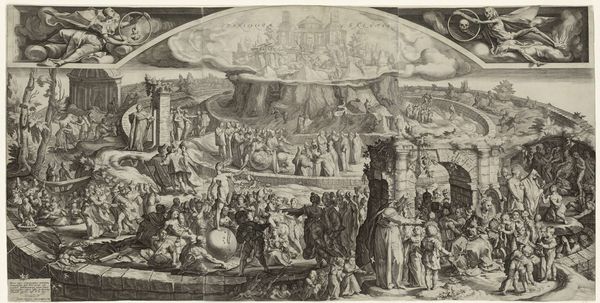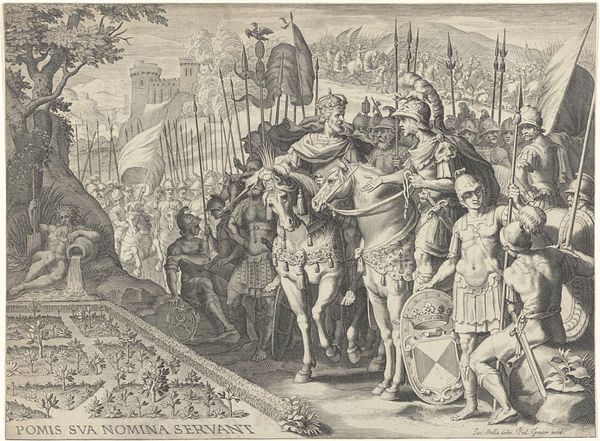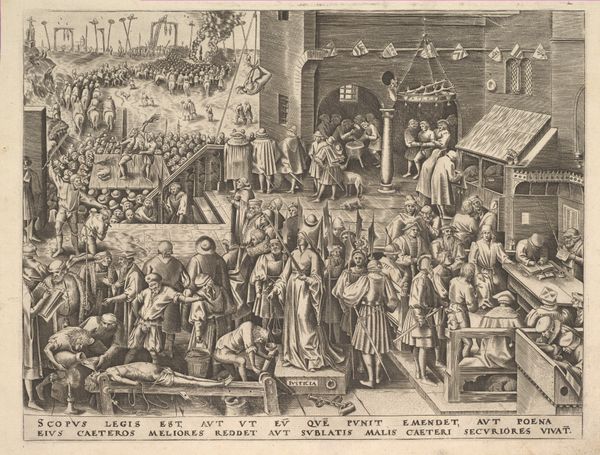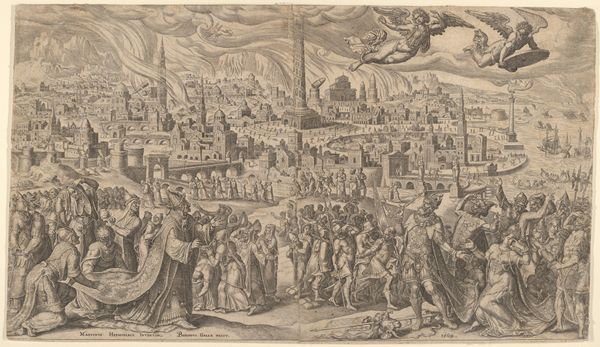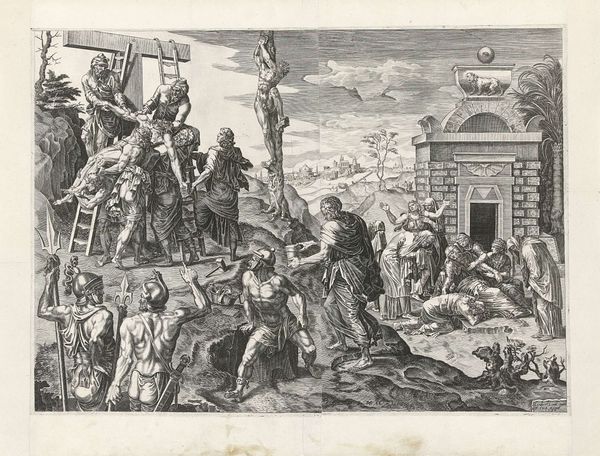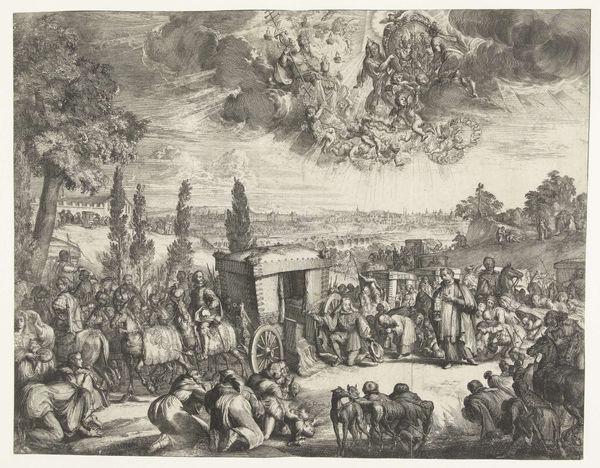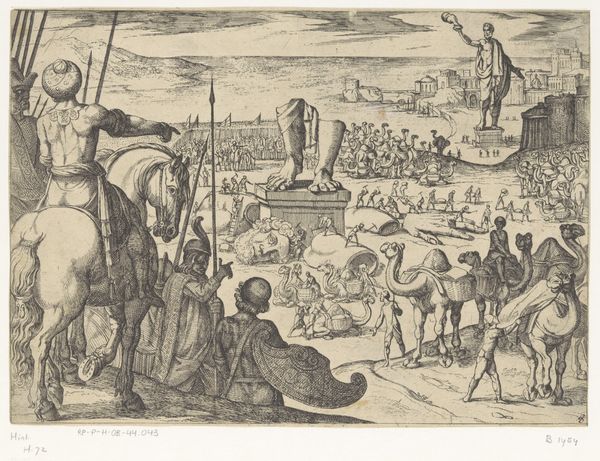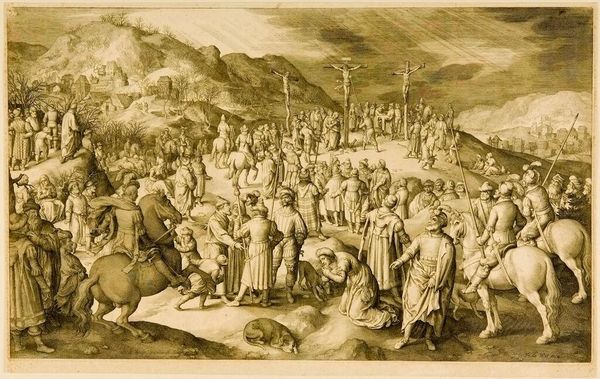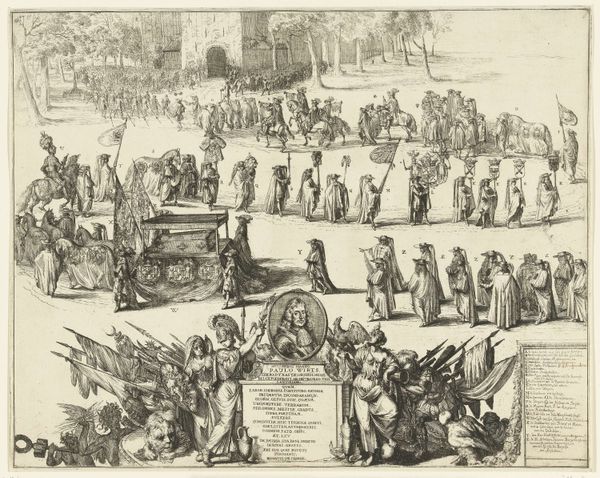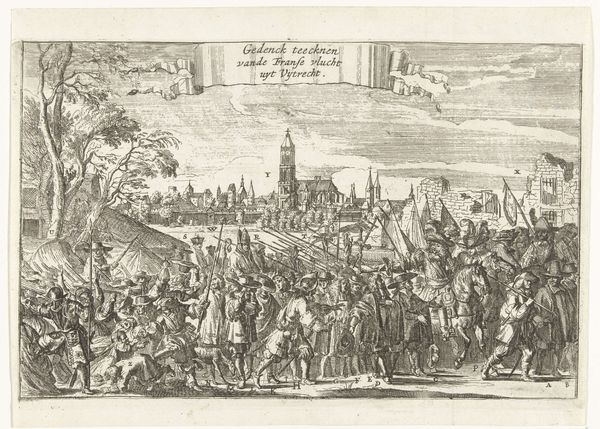
drawing, ink, engraving
drawing
ink drawing
mannerism
figuration
ink
line
cityscape
history-painting
engraving
Dimensions: width 698 mm, height 450 mm
Copyright: Rijks Museum: Open Domain
Editor: We’re looking at Nicolaes de Bruyn’s "The Idolatry of Solomon," an ink drawing from 1606. There’s a definite grandeur to the composition; the city background feels almost overwhelming. What do you see as the key visual elements at play here? Curator: I observe primarily the artist’s masterful deployment of line to create both form and depth. Note the intricate cross-hatching used to build up shadows, lending volume to the figures and architectural structures. Observe also the contrasting textures: the smooth, flowing drapery versus the rough, hewn stone of the city. Editor: That linearity does create a lot of intricate details. It almost feels like a tapestry rather than a drawing at points. The composition directs your gaze all over. Is that a conscious choice do you think? Curator: Indubitably. The linear style compels the viewer to actively scan the entire surface, appreciating the density and complexity of the image. Consider, for example, how the eye moves from the foreground figures, up and across the elaborate cityscape. Are you also struck by the almost decorative flattening of space, particularly in the background? Editor: Now that you point it out, the figures are clearly more defined than the architecture which gives a clear contrast to each. Did this piece perhaps inform future cityscapes and their artists? Curator: Possibly. However, its aesthetic contribution resides in the intrinsic articulation of form, rather than its referential content. The overall effect transcends narrative; it exists primarily as an exercise in pictorial construction. Editor: Right, it's about how it's made, rather than necessarily the history that it illustrates. I see the linear style so much more clearly now. Thank you. Curator: It has been my pleasure. A deeper reading has much to do with focusing on constituent formal elements of art.
Comments
No comments
Be the first to comment and join the conversation on the ultimate creative platform.
